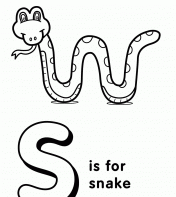The Museum Blog
Category: Science
GAME: Pattern Snake Hide and Seek
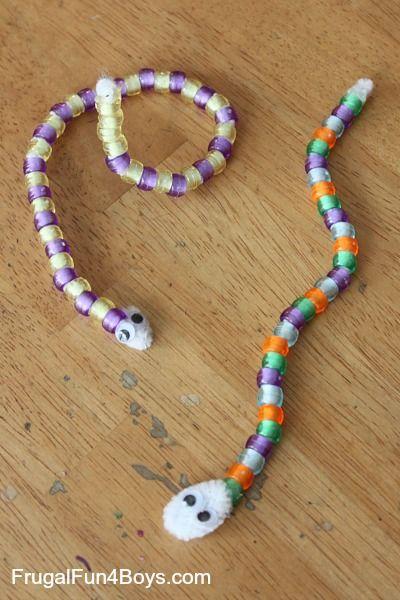
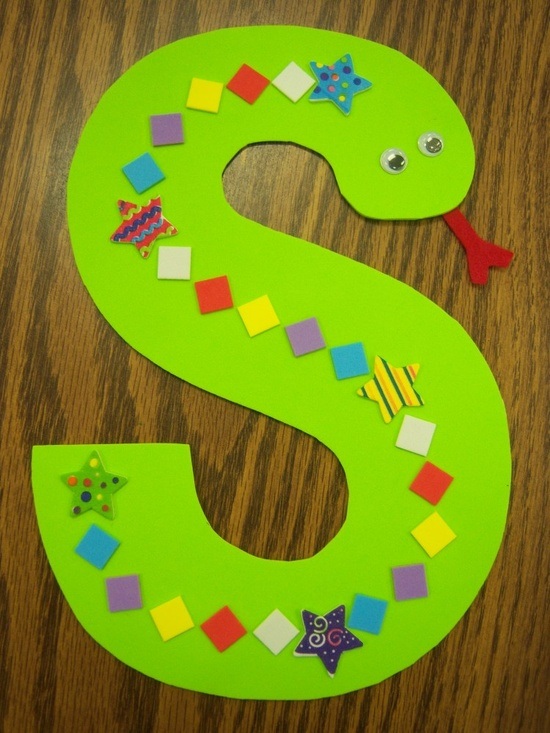
By Colie Haahr, CMNH Educator
This is an active game, but can be done with no running, indoors or outdoors!
Kids love hiding things and finding things, so this is a game that can last for quite a long time, and can be played with just two people or more.
Set up: First, have each player create a snake. You can use pipe cleaners and beads to make a pattern snake. If you do not have materials available to make a pipe cleaner snake, you can color a snake instead by drawing a snake, having your child draw a snake, or using a template.
Game play: Once everyone has decorated or put together a snake, take turns hiding and finding them. There are a few different ways to do this. If younger kids are playing with older kids, a variation that works well is to have a grown up hide all of the snakes, and kids can search for and find only their own snake. This makes the game more fair in that one person will not find all of the snakes right away.
Rules:
- Use your own house rules for hide and seek: this usually includes no peeking while someone is hiding or hiding items!
Explore more:
Add to the fun: have a “pattern pageant” with a grown up as the judge. Inspect the patterns, ask kids to come up with hidden talents for their snakes, and choose a snake as the winner. Maybe it’s the snake that would blend in best in the natural world, the one with the best pattern, or the child who didn’t do so well in the hide and seek game ;)
Talk about why animals have patterns in nature. Usually, this is to send a message to other creatures, such as “I’m dangerous!,” or to help the animal blend in to stay safe from predators. Some animals have patterns that mimic other things, allowing the animal to appear larger than it really is, or blend in with a different group of animals. Elementary aged kids could do some independent research to see who can find the animal with the best camouflage!
Try this printable paper chain python activity:
If you do not have a printer you can make a paper chain by simply cutting up strips of construction paper or copy paper.
Try this printable spiral snake:
Kids can color it in, but may need help from a grown up to cut it out. These would be neat to hang from the ceiling once completed!
This is a very similar activity, but involves finger painting the snake to create a pattern:
You could also make a pattern like this using the CMNH Wacky Art bubble wrap painting method.
Two Ingredient Snow Dough
By Colie Hahr, CMNH Educator
Our most popular drop-in STEAM activities at CMNH seem to involve making messy mixtures! From slime, to dough, to puffy paint most kids love getting their hands a little dirty, and enjoying a sensory experience while they play and create.
One of the easiest make-at-home messy projects is two ingredient snow dough. It’s part science experiment and part sensory play, and honestly just a bit messy compared to the wild world of slime!
Materials:
- Table cover of some kind (a trash bag works!)
- Corn Starch
- Hair conditioner -white works well
- Mixing bowl
- Measuring cups
- Mixing spoon
- Optional: food coloring, cookie cutters, placemat or tray for play, playdough accessories
Dough recipe: this dough has a one to two ratio of liquid to solid ingredients, so it is easy to double or halve the recipe:
Ingredients:
2 cups cornstarch
1 cup inexpensive hair conditioner
Food coloring (optional)
Directions:
- Add the food coloring (optional) to the conditioner, then mix in a large bowl.
- Add the cornstarch to the bowl and mix thoroughly. Kids can take turns mixing. Keep mixing with a spoon until the consistency seems like playdough
- If the mixture is too wet, add corn starch, and too dry add a little more conditioner. Avoid handling the dough until it looks nice and smooth- this will help contain the mess in the bowl until it is ready to be handled.
- Play with the dough using cookie cutters, stamps, small figurines, or other manipulatives of your choice. It is washable from most surfaces, but kids should be supervised as they would with playdough
What Happened? Once the dough is mixed together, a whole new material has been created, however, the reaction is complicated because the conditioner includes several mixtures and solutions in its ingredients. A mixture is when two substances are mixed together, but you can separate them back into their individual parts. Trail mix is a good example of a mixture. A solution is a substance where you mix ingredients together, and it’s not possible to separate them. Hot Cocoa is an example kids may understand: once you mix hot cocoa powder with milk or water, can you turn it back into milk or water again?
For this activity, you mixed together two different ingredients to make something new. The corn starch is a solid, even though it is a very fine powder. It’s similar to the shape, size, and texture of sand, so making this comparison may be helpful for kids to understand that something can be solid, but also be made of very small parts. Corn starch is used to help make things thicker for cooking, and it also helped to make the dough thicker and more solid.
The other ingredient is hair conditioner, which is a liquid even though it is very thick. The conditioner helped to make the dough softer and easier to mold. The dough you created is still a solid, but it is able to be sculpted and shaped! The ratio of conditioner to corn starch is what made the dough work. This recipe used a 2 to 1 ratio, so there was twice as much cornstarch as conditioner. Older kids can work on fractions, adding, measuring, and dividing as part of this project.
One way to explain this experiment to kids is to ask them to think about making a cake. When you mix all of the ingredients together to make a cake, the ingredients go through a physical change and create a mixture. When the cake goes into the oven to bake, a chemical change takes place, and the batter mixture turns from liquid into a solid baked cake. It would not be possible to take the eggs, flour, or milk back out of the cake once it is cooked, and that’s part of what makes it a chemical change rather than a physical change. For matter to change, usually something needs to be added such as heat or pressure. We didn’t add heat or pressure for this experiment, so even though the dough was very different from the two ingredients that we put together to make it, it is still a physical change. We did not cook it like a cake, AND it’s not edible, so don’t eat it!
Physical Change: A physical change is a type of change in which the form of matter is altered but one substance is not transformed into another. For example, folding paper to make an origami crane changes the shape and size of the paper, but it is still paper.
Chemical Change: A chemical change is any change that causes a new substance to be formed. For example, if an origami crane were to catch fire and burn, the paper would turn into ashes, a new substance.
Mixture: A substance made by mixing other substances together. For example, trail mix.
Storage: The dough should last for about a month if it’s sealed up in a container. Add a little water to the dough if it dries out, and it will last longer.
St. Patrick’s Day Treasure Hunt!
Materials Needed:
- Cake pan or other container with deep-ish sides
- Baking Soda
- Vinegar or lemon juice
- Green food coloring
- Spray bottle or small bowl
- If using a bowl, also have a spoon
- Coins/spare change
Prep the activity:
- Place a trash bag or plastic tablecloth over the “experiment area” (food coloring can stain!)
- Spread out the coins on the bottom of your cake pan
- Cover the coins with baking soda
- Fill the spray bottle or small dish with vinegar/lemon juice and green food coloring
Invitation to play:
- Welcome your little one(s) into the science area and explain that some leprechauns stopped by and left a science experiment...and some treasure!
- Invite them to begin investigating---spraying the spray bottle or carefully spooning some vinegar onto the baking soda
- Inquire: What is happening? What do you notice? What do you hear? Why is that happening? What is hiding under the baking soda?!
The science:
- Vinegar is an acid and baking soda is a base. When acids & bases are added together--we get a chemical reaction! A chemical reaction is when you combine two substances and create something new. In this case, we are combining vinegar (a liquid) with baking soda (a solid) and getting a gas (carbon dioxide!) We can HEAR the carbon dioxide being created when we listen for the fizzing/bubbling sound.
Happy St. Patrick’s Day!
Learning About Symmetry
The Children’s Museum of New Hampshire’s Monday science class offered a group of eleven 3-5 year olds a chance to learn and apply the concept of symmetry.
The museum’s Early Childhood and Literacy Coordinator, Meredith Brustlin led the Junior Science Explorers class, offered by the museum on Mondays from 1:30 to 2:15pm.
Meredith first gathered the group together and explained the concept of symmetry using images of butterflies, lions, and houses. Kids were challenged to identify which images displayed symmetry and which did not.
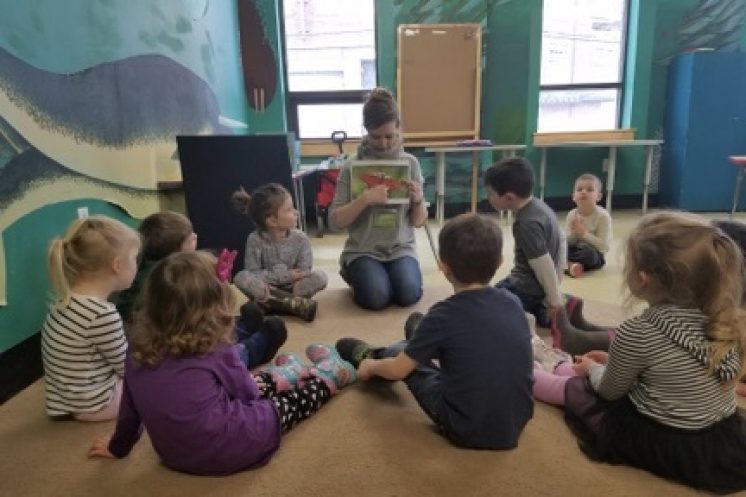
Following the lesson, the group sat down to a hands-on symmetry activity, allowing them to apply what they had just learned. The kids were given the choice of painting one side of either a butterfly or a bee.
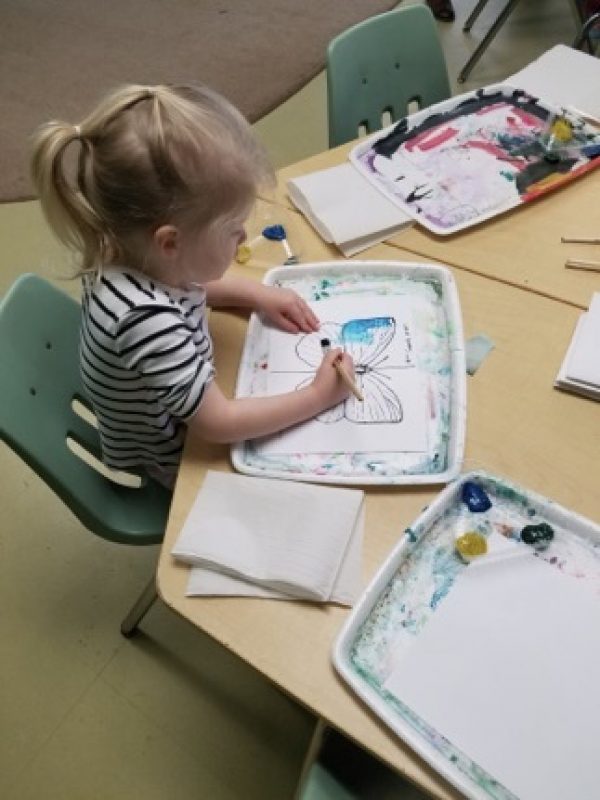
They were then instructed to fold their papers in half, revealing a symmetrical work of art they were free to take home.
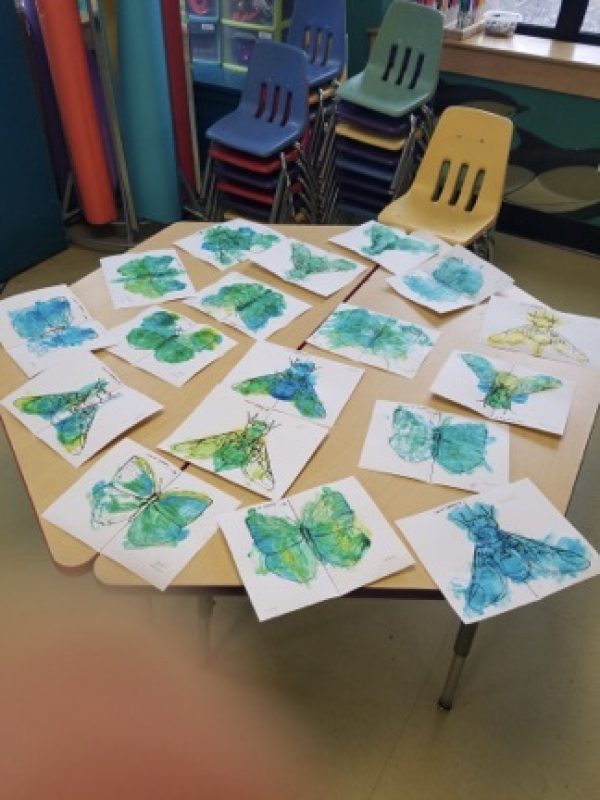
Meet the 2018 Young Makers
We're so excited for our 6th annual NH Maker & Food Fest happening this year on Saturday, August 25th from 10am-4pm! This day long festival (formerly the Dover Mini Maker Faire) is a giant showcase of local talent. We have over 50 participants this year, including performers, food vendors, science geeks, and the young makers featured here in this blog post! Mark your calendars, get your tickets early, or at the door, and get ready to be inspired!
Caleb Weinstein - Lichtenberg Figures
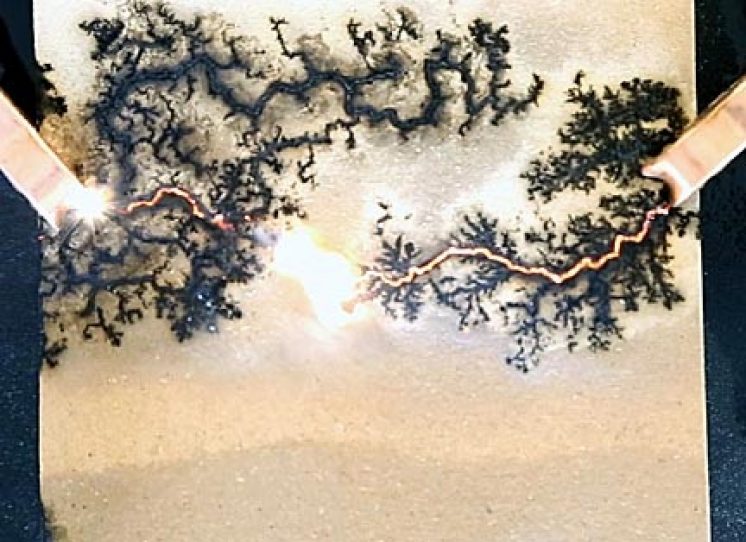
This 8th grade Maker is new to the NH Maker & Food Fest this year, but we're all pretty excited to see him in action! He'll be showing off how he uses high voltage electricity to create unique patterns in wood, called Lichtenberg Figures.
"To make a figure, you must take wood, briase it with water that is mixed with an electrolyte (I use baking soda), and then put high voltage electricity through it. I use a 12,000 kV 35 milliamp neon sign transformer."
His unique furniture will also be for sale!
Nicole Knowlton - Abstract Artist
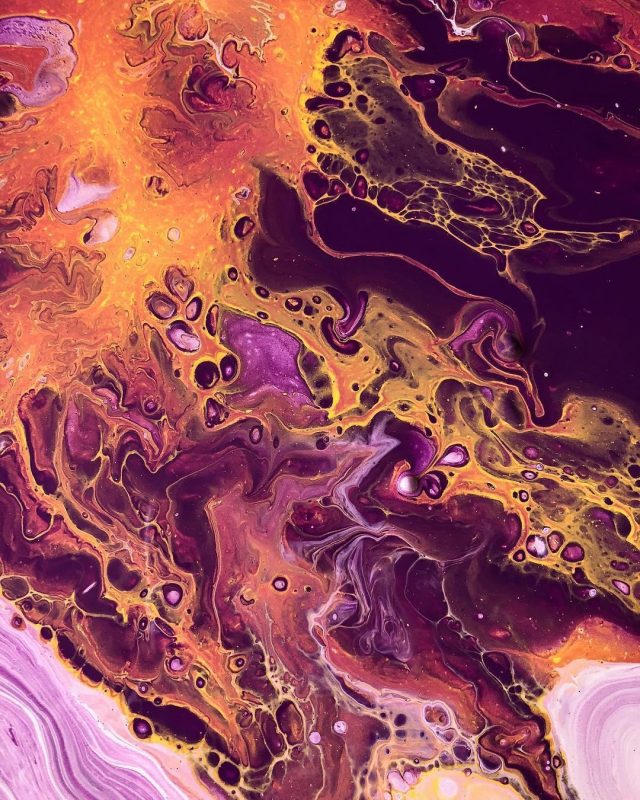
Nicole Knowlton is a young art educator from Franconia, NH who will be showing off her fluid and beautiful conceptual art. Her art is created using house/acrylic paint on canvas, wood, boxes, magnets and a variety of found objects. Stop by Nicole's booth to get inspired and maybe purchase a painting to bring home.
Mixtape A Cappella - Performance
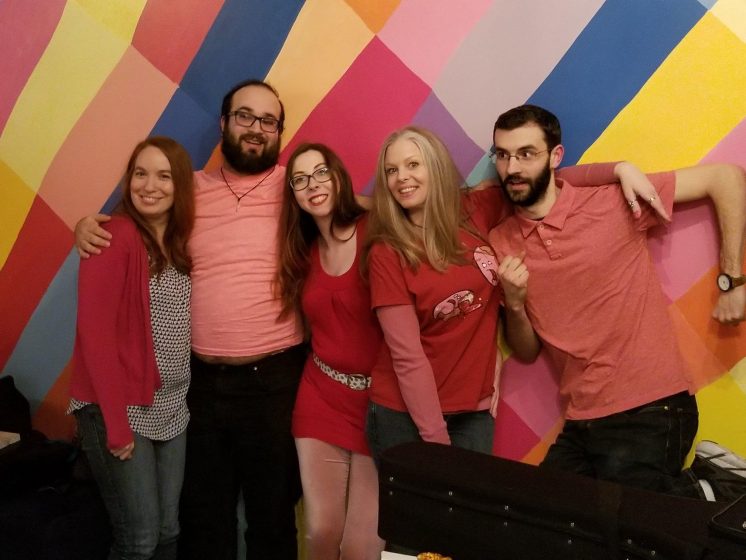
This group of young professionals from NH's Seacoast will mix it up on stage for a 30 minute a cappella performance! Stop by their booth and learn how to warm up your voices, try your hand at a cappella trivia and play the "Wheel of Songs!"
Audrey Ammann - Pretty Aud Face Paint
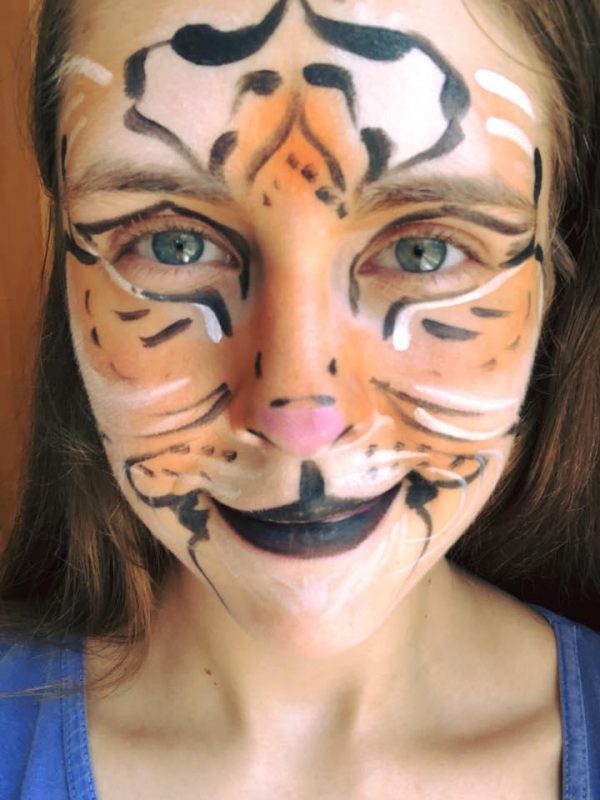
Audrey is back for the third year in a row with more of her fantastic face paint designs (available for a small fee). Her original face paint designs use hypoallergenic and FDA-certified paints and can incorporate glitter, stencil work, and even rhinestones!
Beckett Lutton - Word Clock, An Arduino Powered Clock
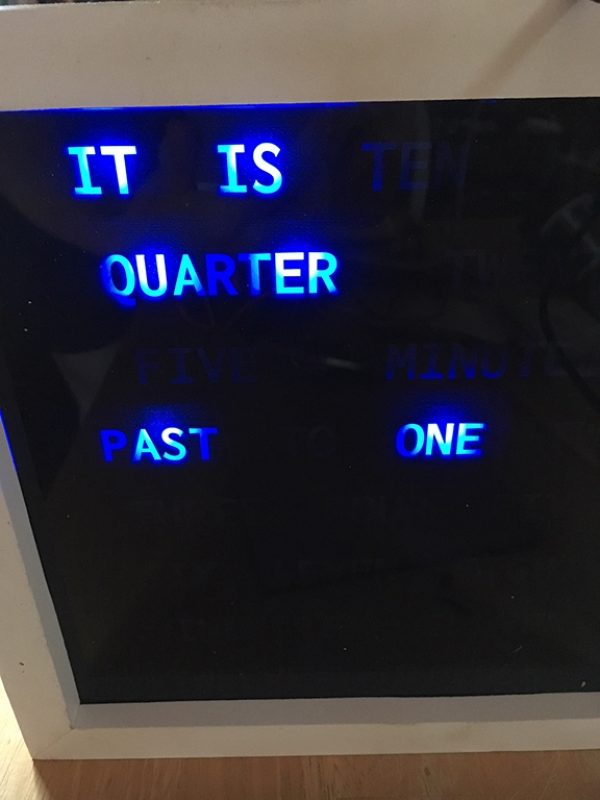
Stop by and say hello to young 12 year old Maker, Beckett Lutton who helped build an arduino powered clock that tells time in English, with the help of his father and neighbor. Adjust the time on the clock and see how different times are expressed!
Kealey Gray - Wheel Spun Pottery
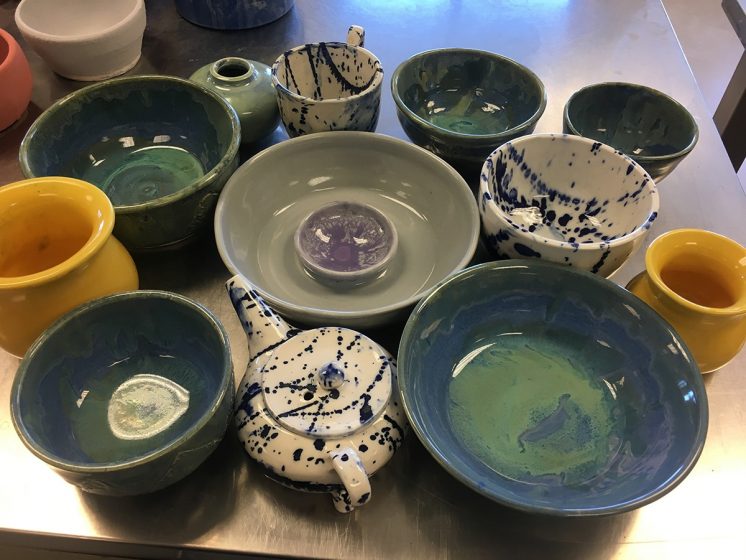
Kealey Gray is a young maker who has been crafting wheel spun pottery for the last three years and will have some unique items for sale. Stop by and play with clay as you learn to make a mini pinch pot out of air drying clay to take home.
Thank you to all our 2018 NH Maker & Food Fest sponsors: The Unique College Investing Plan managed by Fidelity Investments, Prime Buchholz, Alexander Technology Group, Dover Emergency Room (a Campus of Portsmouth Regional Hospital), Great Bay Community College, Albany Engineered Composites, Beswick Engineering, The Rowley Agency Inc., Chinburg Properties, Leone, McDonnell & Roberts, LLC, Martel Plumbing & Heating, Inc., STEM From the Start, iheartMedia, 95.3 The Bull and Z107.
Monday Science Classes Offer a Bonus!
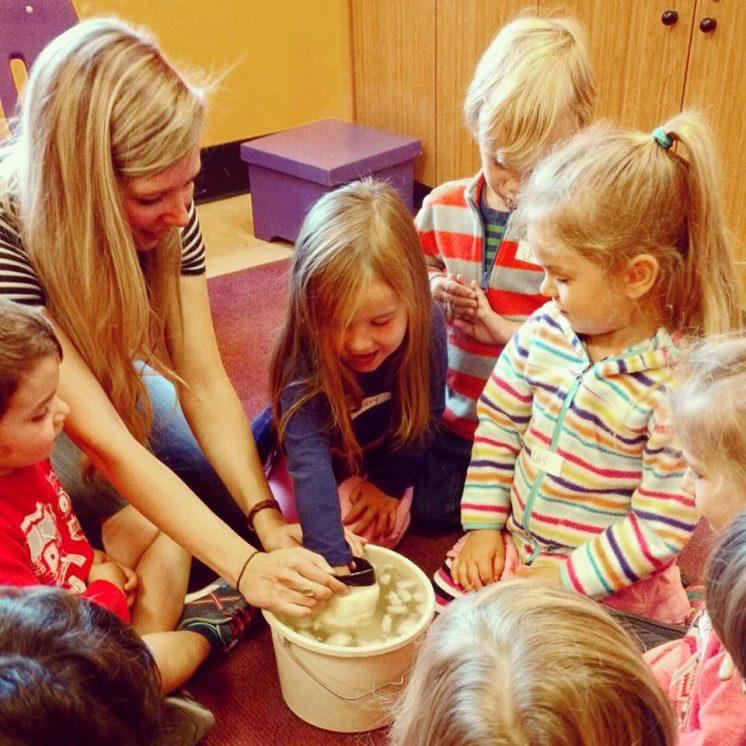
The Children’s Museum of New Hampshire in downtown Dover offers a variety of weekday science classes for preschoolers, as well as homeschoolers but is now offering parents an added bonus during a Monday science class.
The museum’s popular Junior Science Explorers class for kids ages 3.5-5 is now being offered on Mondays, a day the museum is closed to the public. Families who have a museum membership can not only sign up their kids for the class, but any younger siblings can now join parents on the 2nd floor of the museum to play in the exhibits while their older siblings are in class. This is a benefit that’s exclusive to museum members and is only offered while the Monday class is in session.
This November’s Junior Science class theme is “Incredible Animals” and will invite junior scientists to explore habitats, animal tracks, survival techniques and more. The class runs Mondays, November 6 through December 11 from 1:30-2:15pm.
These 45-minute structured science classes are $60 for Members and $70 for Non-members. Pre-registration is required. Call 603-742-2002 to register.
Finding the Summer in STEAM
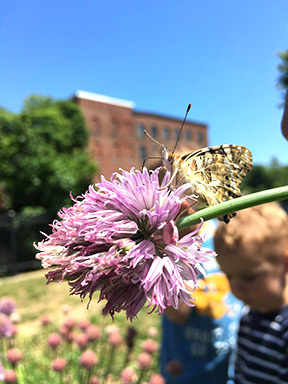 by Sarah Terry, Museum Educator
by Sarah Terry, Museum Educator
Could it finally be summer in New Hampshire? This winter child is a little sad (and hauling up the air conditioners from my basement…), but it’s hard to feel too badly when all the trees and flowers are in bloom!
I’ve been watching our museum garden start to grow out back – we have a ton of different herbs, all kinds of vegetables poking their stems up – and contemplating my unfortunate black thumb. I’ve never really been able get anything to grow except aloe plants (which apparently thrive on neglect), so I’ve been thinking a lot about the science behind growing things, the way plants and animals fit into their environments, and the effects, both positive and negative, that human beings can have on those environments.
It’s with those thoughts in mind that I’ve decided it’s high time to dirty up our fancy new STEAM Lab a bit! For the month of June, all of our lab activities are going to be focused on ecology.
I chose ecology in particular because it focuses on how all the elements of our environment work together. Ecologists look at plants, animals, soil, people – all the pieces of the puzzle. That’s what I’m hoping kids and parents will get a taste of in the lab this month.
And taste may be literal! I’m planning on growing some oyster mushrooms in the lab for kids to inspect, as well as planting some pea plants. We’ll be looking at strawberry DNA, making seed bombs, learning about beavers, making biomes in a bag, and even raising some butterflies!
We’ll be posting our STEAM Lab schedule weekly, so make sure to check our Facebook page and calendar for updates!
And who knows – maybe I’ll even get to upgrade my black thumb to something a little greener! Wish me luck!
Augmented Reality Sand Table
A New Exhibit Opens at the Children’s Museum of New Hampshire
Children Shape the Landscape with an Augmented Reality Sand Table
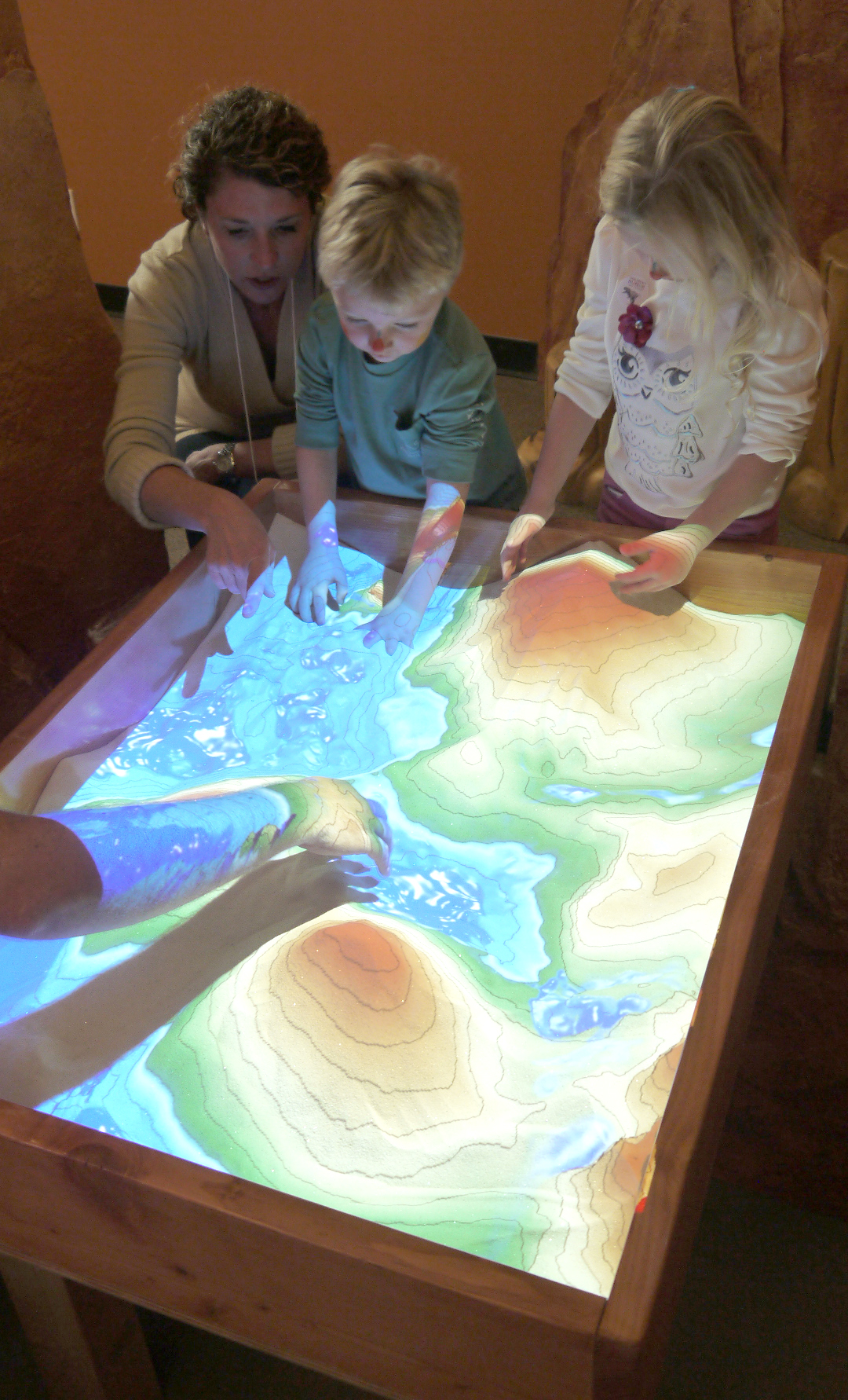 A new exhibit has opened at the Children’s Museum of New Hampshire and it combines all the fun of a sand table, with some interactive and responsive high tech imagery. Guests to the Museum can help shape the landscape with a new augmented reality sand table, installed in the ever-popular Dino Detective area.
A new exhibit has opened at the Children’s Museum of New Hampshire and it combines all the fun of a sand table, with some interactive and responsive high tech imagery. Guests to the Museum can help shape the landscape with a new augmented reality sand table, installed in the ever-popular Dino Detective area.
The technology behind this new exhibit was developed by the UC Davis W.M. Keck Center for Active Visualization in the Earth Sciences (keckCAVES), as part of an informal science education project funded by the National Science Foundation. This hands-on exhibit allows guests to create topography models by shaping real sand, which is then augmented in real time by an elevation color map, topographic contour lines and simulated water, rain and even snow. The system was created to teach geographic, geologic and hydrologic concepts, but the exhibit takes on a different significance when placed in the Museum’s Dino Detective area.
“The sand table relates to the Dino exhibit well,” says Exhibits Director Mark Cuddy. “Geology looks at changes to Earth’s landscape over time, which helps paleontologists determine where to find fossils and, sometimes more importantly, where NOT to look for fossils.” In the rest of the Dino Detective exhibit, guests can dig for fossils, donning the protective eye gear and using the specialized tools that paleontologists would use to unearth these remains. “This entire exhibit is about exploration and questioning what we think we know. Why are the dinosaurs extinct? What can we learn from their bones? How does the water flow around the sand? What happens when I build a dam and then break the dam? Where does the water go?” These kinds of questions are answered, not through labels on a wall, but by the constantly shifting interactivity between the augmented reality component, the sand and the children.
“The best part about this exhibit is that it appeals to everyone. Young, old, new or repeat visitors: Everyone loves to play with the sand!” says Mark. “I’ve heard some great things while watching guests at the table. Things like ‘Woah! Look I made it rain!’ or ‘Let’s all push the sand into a big mountain in the middle of a lake.’ It keeps our guests constantly engaged and learning.”

